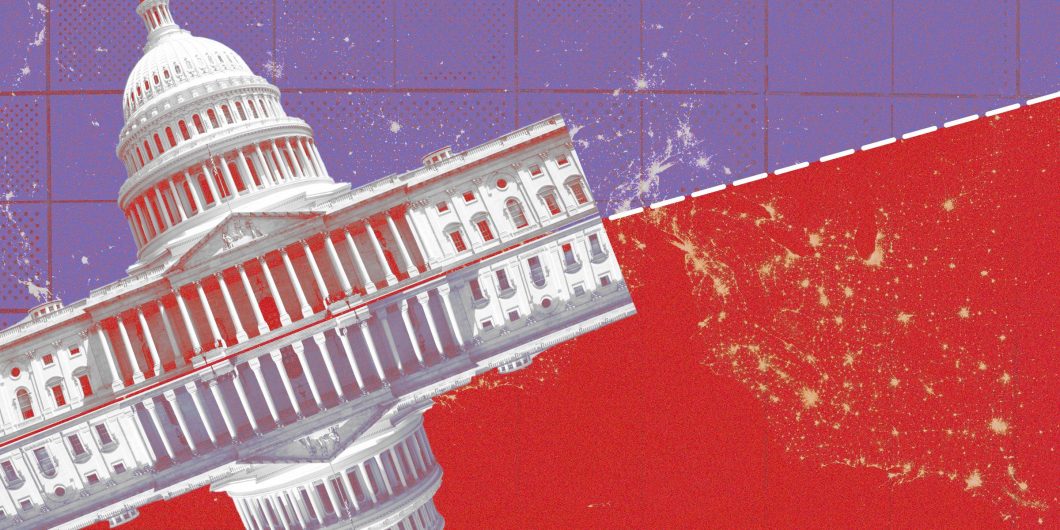Constitutional Interpretation and the Brooding Omnipresence
True to its name, the “brooding omnipresence” of the federal common law looms large over Michael Greve’s The Upside-Down Constitution. In several chapters (most notably, chapters six and ten), Greve discusses the Court’s 1938 opinion in Erie Railroad Co. v. Tompkins, which upended the preexisting (and according to Greve, largely sensible) governing conflict-of-law regime most famously described almost a century earlier in Swift v. Tyson. The shift from Swift to Erie is both an episode in Greve’s critique of the Supreme Court’s current approach to federalism and also illustrates his broader critique of constitutional interpretation more generally. I will address these two issues in order.
Start with Greve’s critique of Erie. As any student of civil procedure knows, Justice Joseph Story’s 1842 opinion in Swift understood the term “laws” in the Rules of Decision Act to require, in diversity cases in federal courts, the application of state statutory law and the States’ “long-established local customs having the force of laws,” such as “rights and titles to things having a permanent locality” like real estate and “other matters immovable and intraterritorial in their nature and character.” But Justice Story reasoned that “general” common law formulated by federal courts governed other issues—like the dispute over the validity of the bill of exchange at stake in Swift. Thus, to take an example, in litigation between a Maine resident and a New York resident over the validity of a check, a federal court under the rule in Swift would apply neither Maine law nor New York law, but rather general law—or what the court believed to be the best rule, properly derived.
A century later, Erie levelled a number of criticisms at Swift’s reasoning. One criticism was that Swift had misconstrued the term “laws” in the Rules of Decision Act. Another criticism was that the Swift Court had misunderstood, not the technical meaning of the Rules of Decision Act, but the nature of “law” generally. “There is no federal general common law,” Justice Brandeis solemnly intoned in Erie; Swift rested on the flawed “assumption that there is ‘a transcendental body of law outside of any particular State but obligatory within it unless and until changed by statute.’” Or as Justice Holmes colorfully claimed in one of his dissents that presaged Swift’s demise, the common law is not a “brooding omnipresence in the sky.” All of that was a roundabout way of saying that law must come from somewhere and, according to Erie, the only “somewhere” available in diversity cases was the state-court common-law system. Federal courts in diversity thus had to apply state common law. (Let’s leave aside the possibility that, in the Rules of Decision Act, Congress might have called for federal courts to apply general common law, or that the state legislatures themselves might have expected federal courts to announce general common law in diversity cases.)
Erie was no doubt a monumental immediate change in the legal architecture of the early twentieth century—and no doubt prompted monumental changes in the immediate day-to-day litigation strategies of early twentieth-century lawyers. Greve describes Erie as “one of the most central decisions, not just in the New Deal’s Constitution but in the entire history and architecture of American constitutional law.” It is, in his words, “the pivotal case of the New Deal Constitution.” But although it’s hard to imagine the appropriate counterfactuals, it’s not clear how Erie systematically changes the outcomes of individual cases today. Along with Erie—which points toward state-specific analysis for the choice of law—the twentieth century saw harmonizing trends in the adoption of the Uniform Commercial Code and various Restatements of Law, as well as federal statutes that preempted entire fields formerly governed solely by state law. In a world of Restatements and federal statutes, state-by-state forum-shopping still exists. But without painting with too broad a brush, there’s reason to believe that, frequently, the primary motivation for a plaintiff’s election of forum among federal courts in different States is the choice of judge or jury, rather than the substantive content of contract or tort law.
As for Erie’s role in the legal architecture of constitutional law, the broadest understanding of Erie’s funeral oration for the “federal general common law” never prevailed. The Court never did—and never could have—entirely rid itself of judge-made law, in light of whole bodies of such law like admiralty and specific transsubstantive rules like laches that litter the legal landscape. “Judge-made” law—in the sense of non-statutory, non-codified law—was simply everywhere. Seemingly an entire generation of academics sought to explain and to justify Erie’s more metaphysical musings in light of this obvious fact, before John Hart Ely bent Erie’s reasoning to more practical and less grandiose ends in his article The Irrepressible Myth of Erie.
Ten years after The Upside-Down Constitution’s publication, we are still puzzling over the place of unwritten rules of interpretation in our constitutional order.
That brings me to a second aspect of Greve’s argument in The Upside-Down Constitution—his defense of a “competitive” federalism that disciplines government at all levels, rather than a “cartel” federalism that allows States to “yield to central authority only if the move promises to enhance their surplus capacity.” Notably, Greve repeatedly contends that the “principles and premises” of the federalism he advocates “cannot be found in the Constitution,” but rather “form its bedrock.” This is the broader project of The Upside-Down Constitution: The Constitution must be understood in light of structure, logic, and purpose that (as Greve puts it in his own reflections on the book’s ten-year anniversary) “[c]onventional forms of modern-day originalism do nothing to recover.”
Here, then, is another question raised by the logic of Erie: What justifies the unwritten and uncodified rules of constitutional interpretation? Or are they, like the general federal common law, a brooding omnipresence in the sky?
Let me start with some ground that (I think) I share with Greve on this topic. Unwritten rules govern the interpretation of every document ever written. Even if a document were to list the rules of interpretation within its four corners, a reader would have to assume, as an unwritten rule, that the author of the document did not write the list with a wink and a finger crossed behind the back—i.e., did not write the list with the expectation that a different set of unwritten rules would actually govern the interpretation of the document. In the case of discerning public meaning (as opposed to authorial intent), the reader would need to assume that the author and the public did not, together, have their fingers crossed. To put the point slightly differently, even in the case of a Constitution with rules of interpretation expressly listed and embedded in the written document, a reader would (before applying the interpretive rules) have to assume good faith on the part of the list’s author and the public at the time of the Constitution’s adoption. The assumption of good faith would, itself, be an unwritten rule of interpretation. The point, more abstractly, is that all forms of communication occur against the backdrop of unstated assumptions about how words and concepts are being used.
The fact that readers have to rely on unwritten rules to interpret legal documents by no means renders the interpretive exercise hopeless. Some interpretive rules—such as the assumption that the authors of a Constitution did not write it with a wink and a finger crossed behind their back—simply are far more plausible than any rule to the contrary. (To be sure, the contrary interpretive rule—that the authors of a Constitution lied about its protections—may well be plausible in lawless societies, where the written law is truly nothing more than a parchment barrier.) But because the unwritten interpretive rules cannot be found solely within the written text, one must derive them in some fair way.
In my view, the unwritten rules that form the core of modern-day originalism rest upon a particularly robust understanding of the Aristotelian maxim that “like cases should be treated alike.” Just as a set of rules govern the interpretation of contracts and statutes, so too (originalists argue) similar rules should govern the interpretation of the Constitution. Thus, to the extent structure, logic, and purpose, properly understood, are relevant for interpreting the former (as I believe they are), so too must they be used to interpret the latter.
The question is how best to derive the structure, logic, and purpose of an instrument like the Constitution. In this regard, Greve relies on the “precepts of public choice theory and constitutional political economy.” But can we derive the rule of Swift v. Tyson or Erie R.R. v. Tompkins directly from the abstractions of public choice theory? In my view, no. We need something more—whether that is evidence of the specific meaning of the Rules of Decision Act or the general understanding of the term “laws” within the community that adopted the statute. In this instance, abstractions don’t get us to concrete results. In addition, would it be fair to attribute public choice theory, in all of its particulars, to the authors of the Constitution? I don’t know. Those authors might have had a rough sense of similar concepts, but care must be taken not to presume that the Constitution incorporated all of the perspectives of twentieth-century economists.
The Upside-Down Constitution recognizes these points and spends time and energy canvassing the views of various participants in the constitutional debates of the eighteenth and nineteenth centuries. That is all to the good. It is partly through that kind of in-the-weeds work that we might better understand the provisions of the Constitution. But Greve is correct that we cannot divorce the in-the-weeds work from the broader logic of the whole instrument. To borrow the words of Edward Corwin, writing just under a century ago, that logic is part of The “Higher Law” Background of American Constitutional Law. Ten years after The Upside-Down Constitution’s publication, we are still puzzling over the place of unwritten rules of interpretation in our constitutional order.



